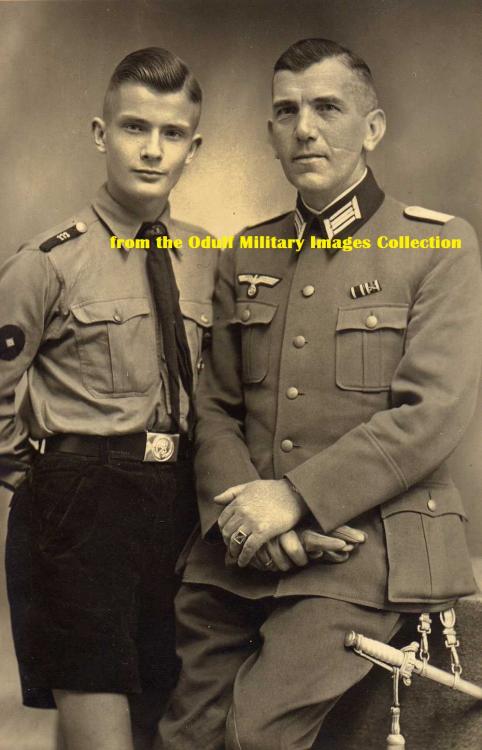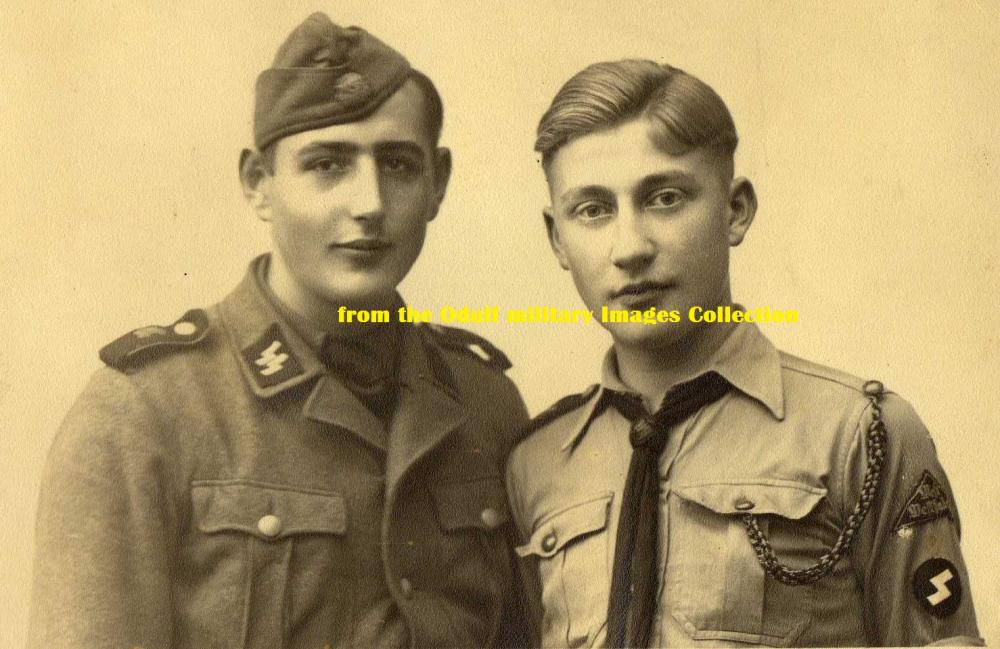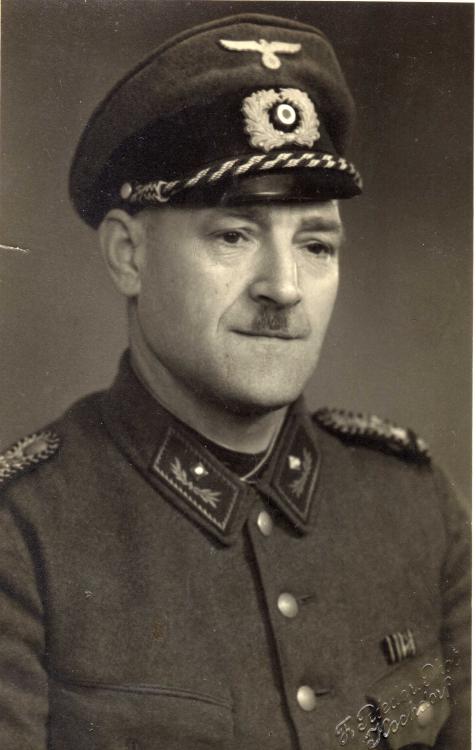-
Posts
2,143 -
Joined
-
Last visited
-
Days Won
10
Content Type
Profiles
Forums
Blogs
Gallery
Events
Store
Everything posted by Odulf
-

Possible Chaplain item?
Odulf replied to Jock Auld's topic in Germany: Third Reich: Uniforms, Headwear, Insignia & Equipment
In my collection i have this very interesting photo of an Obergefreiter (Lance-Corporal) obviously conducting a funeral and wearing a clerical "stola" as he should when conducting an official rite. Note the very plain style of the Stola, it is straight and with fringes, prpbably his own. Many professed clerics served as conscripts in the German Forces. Generally they were employed as Sanitäter (stretcher bearers) or in other non-combattant rôles. To illustrate, I also add some German death-cards from my collection (all Gebirgsjäger / Mountain Troops). When official Chaplains were not available, it is thinkable that professed clerics could also conduct the Holy Rites and funerals. -

Uncategorised Unidentified WW2 Miscellaneous Signatures
Odulf replied to hucks216's topic in Germany: All Eras: Signature Database
The 1945 document was probably signed by Major Eugen Carl (DKiG) -

Possible Chaplain item?
Odulf replied to Jock Auld's topic in Germany: Third Reich: Uniforms, Headwear, Insignia & Equipment
I went through the Slicht & Angolia books, to see what they wrote about this matter. Only in the Kriegsmarine volume (in German language) on page 378 it says that the stola (which is the official name for this item) is of blue silk with flower design and a red reverse; the ends have blue fringes of silk with knots of bullion. Near the end a swastika on it's point in gold bullion. In the volumes for Army and Air Force there is no mention of a stola. But if there was a kind of "official" pattern for the Navy it is thinkable that patterns for the Army also existed - but note the swastika! To my idea it is wishful thinking that your stola was an official Army type. To my knowledge, however, Catholic Chaplains with a temporary commission could bring their own kit. Like the British Chaplains they would have had a little suitcase containing the cups, candlestick holders etc. What puzzles me in the description of Slicht & Angolia, is that they only mention a blue stola for the Navy, because, as Bayern points out, there were various stolas to be used according to the liturgic calendar, and blue is not one of the colors in this calendar (the official liturgic colors through the year and for special masses are: white, red, green, purple, black, pink). -

Uncategorised Unidentified WW2 Miscellaneous Signatures
Odulf replied to hucks216's topic in Germany: All Eras: Signature Database
Who signed this very late document? What identity goes behind this signature? Document dated 20-4-1940, signed in Wehrkreis VI. -

Possible Chaplain item?
Odulf replied to Jock Auld's topic in Germany: Third Reich: Uniforms, Headwear, Insignia & Equipment
I see no reasons why this would have a military connection. -
It is a Belgian Lion. The Dutch Lion Always faces to the left (from viewer's point) and is armed with a gladius/sword and bundle of 7 arrows. The Belgian Lion is never armed.
-

Kriegsmarine Kriegsmarine badges in wear.
Odulf replied to Martin W's topic in Wehrmacht Medals, Decorations & Awards
Interesting stuff Marin!!! -
the absence of the eagle may indicate that the picture was taken after the German military capitulation. Great photo, Martin !!!!
-

photographs Multi Uniform Portraits
Odulf replied to Odulf's topic in Germany: Third Reich: Research, Documentation & Photographs
Very nice pic of the Forestry guy and his Officers' Candidate son, Larry. Always intersting to see awards for ops at sea on the Navy green uniform, Martin. Some more from my Navy section... - two brothers (U-Boat Service & RAD) - Frontarbeiter (Army Construction Units) and Navy - two quite young looking brothers, Panzer and Navy -

Kriegsmarine Kriegsmarine badges in wear.
Odulf replied to Martin W's topic in Wehrmacht Medals, Decorations & Awards
A tired looking German Navy Artillery Lieutenant, as a POW in 1946 (note the absence of the parrot) wearing his Naval Artillery Badge (with the swastika) on a rather worn out uniform. It looks like the bird in the badge has lost the swastika, is that so Larry? -

photographs Multi Uniform Portraits
Odulf replied to Odulf's topic in Germany: Third Reich: Research, Documentation & Photographs
Nice to see the Veteran's dress Larry, and I like the early style Army uniform. Some more Army guys with their relatives and/or friends: - Army (Radfahrabteilung 1) Cyclist and Police, in 1938; - Army (75th Inf.Rgt.) and Navy, pre 1939; - Army and Police, around 1935; - Army and Reichsarbeitsdienst, around 1938; - Army and Navy,two brothers Walter and Rudi who were both killed (the photo was likely manipulated to put them together); - Army (2 different uniforms) and Air Force, in 1941. -

photographs Multi Uniform Portraits
Odulf replied to Odulf's topic in Germany: Third Reich: Research, Documentation & Photographs
-

photographs Multi Uniform Portraits
Odulf replied to Odulf's topic in Germany: Third Reich: Research, Documentation & Photographs
top picture - far right = NSKK



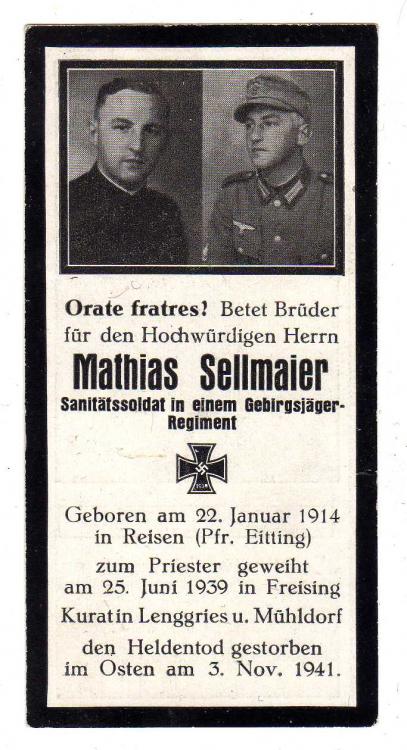
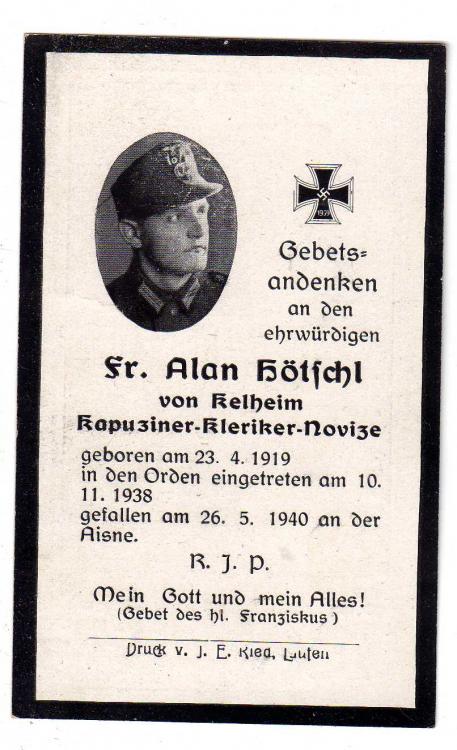
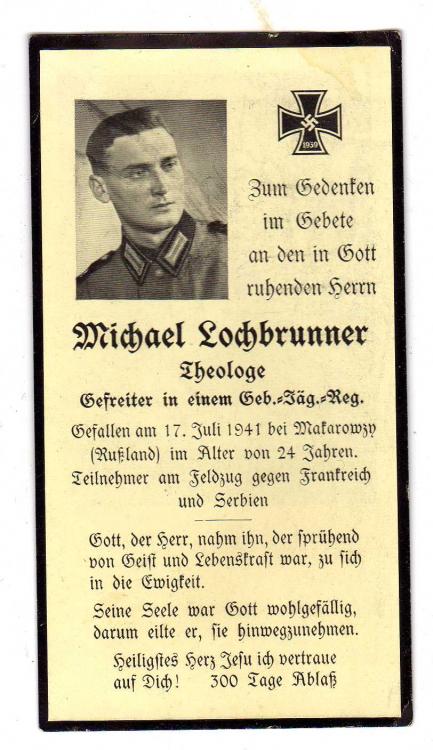
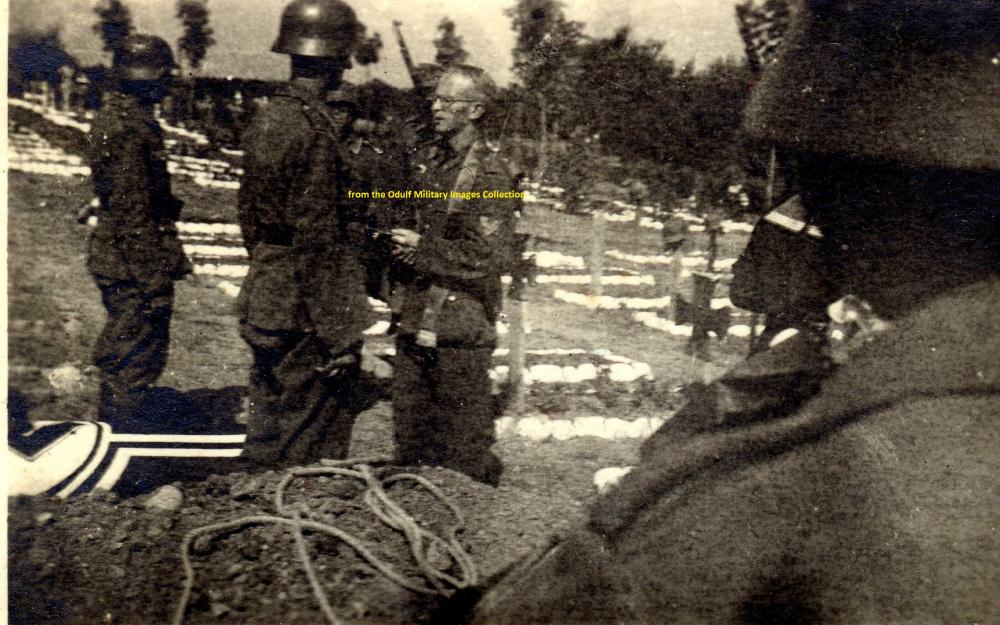

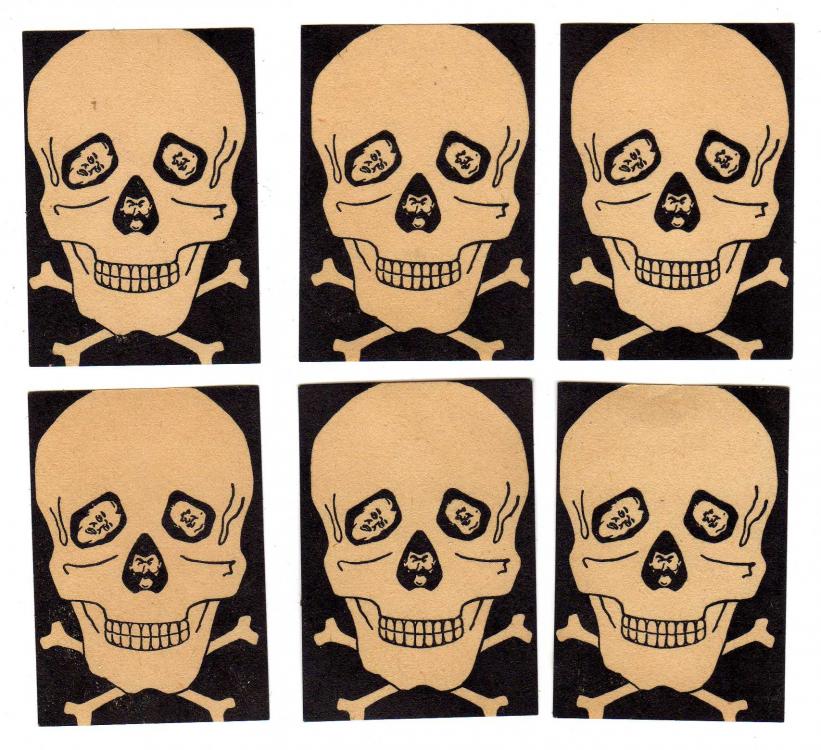
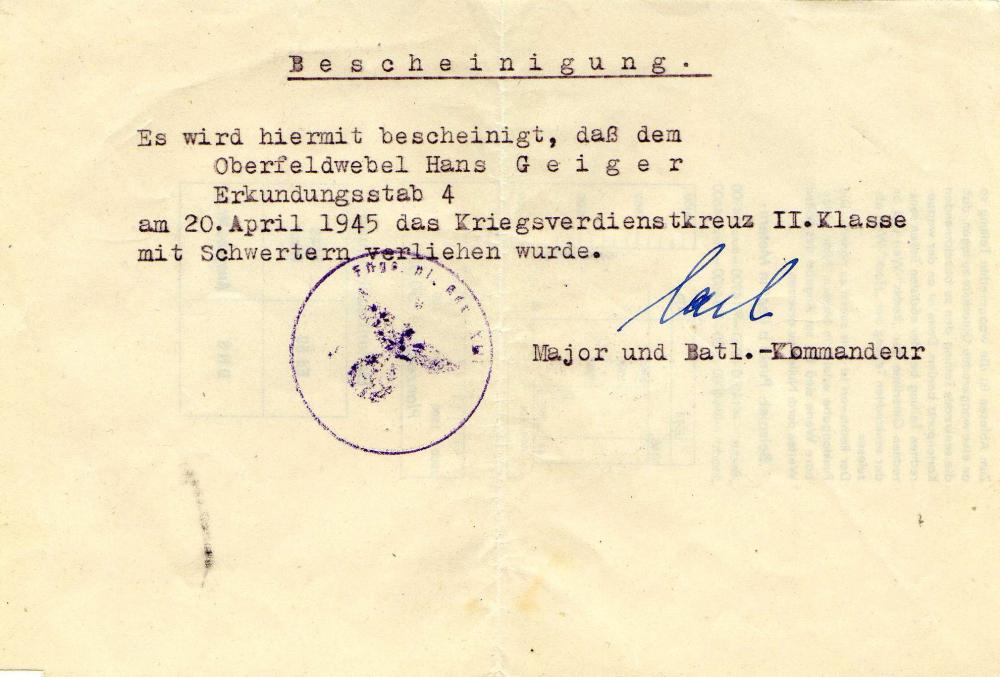
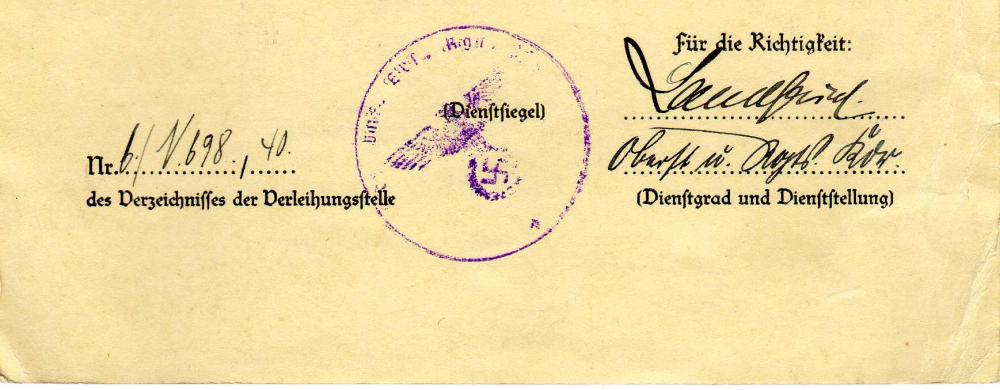
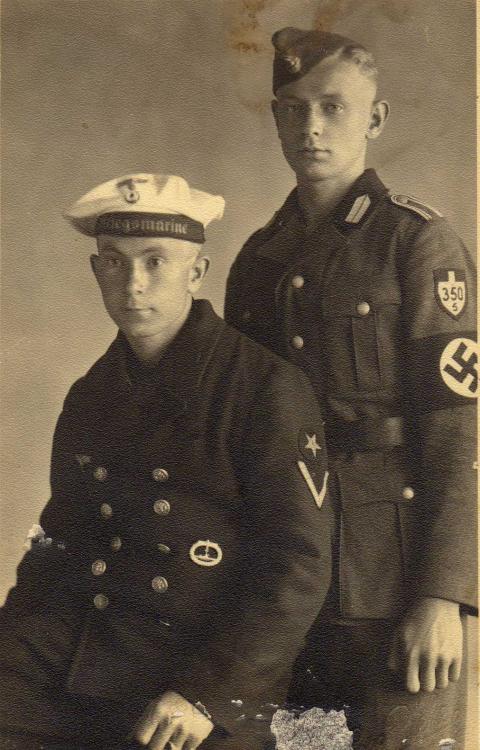
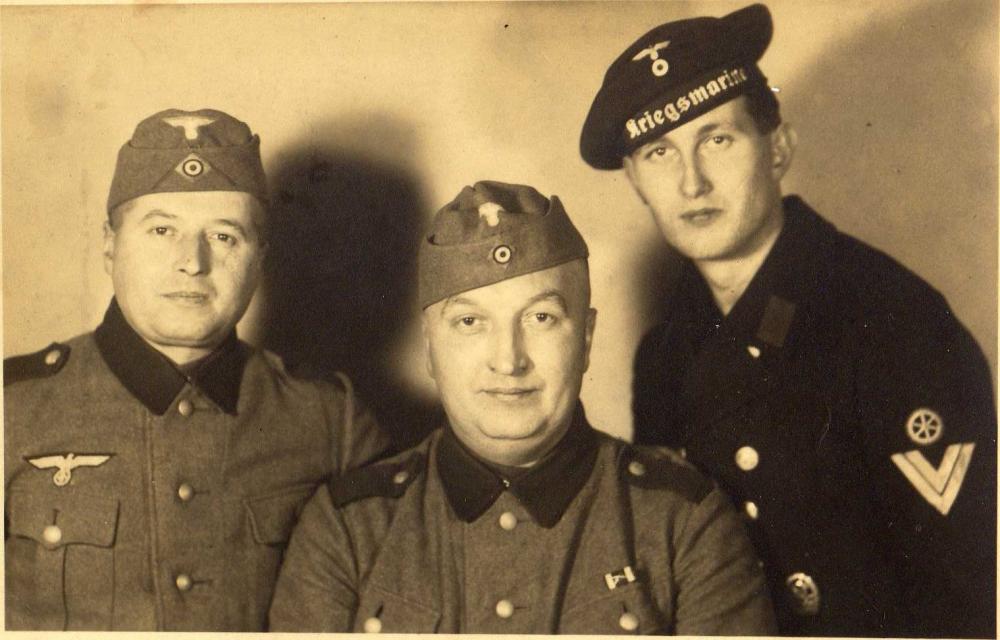
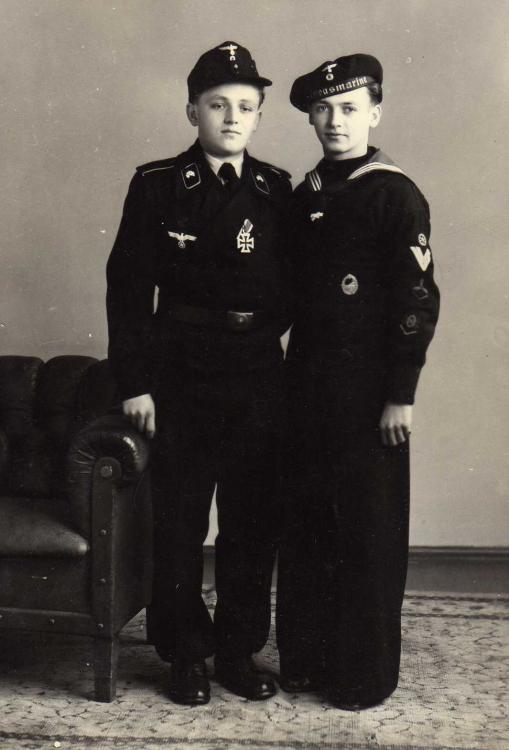
@.thumb.jpg.fdd920512e7fd2f1a4e6e009c1c018ee.jpg)
.thumb.jpg.05de5b5f610e399bced6b19745335a5c.jpg)
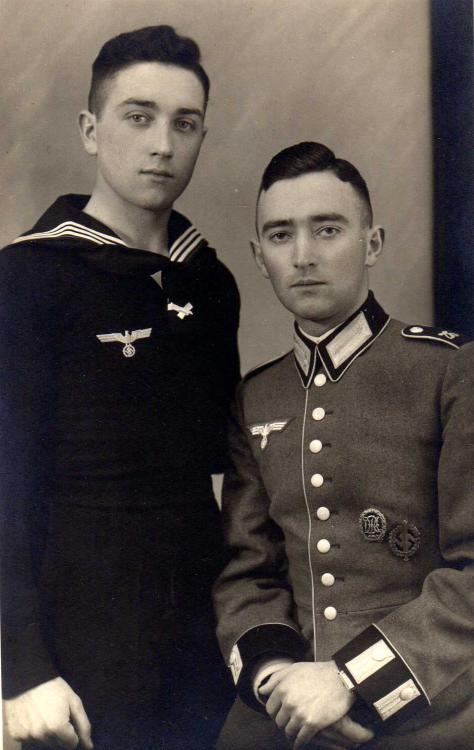
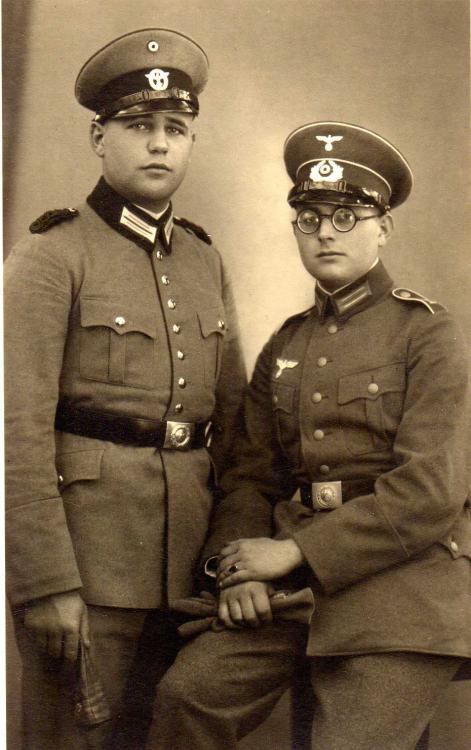

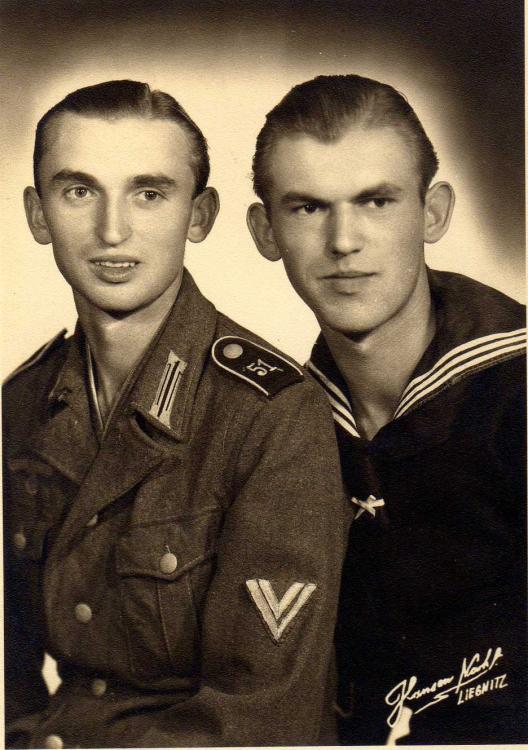
.thumb.jpg.53abe10d09733d9d138da5f78c2702f9.jpg)
